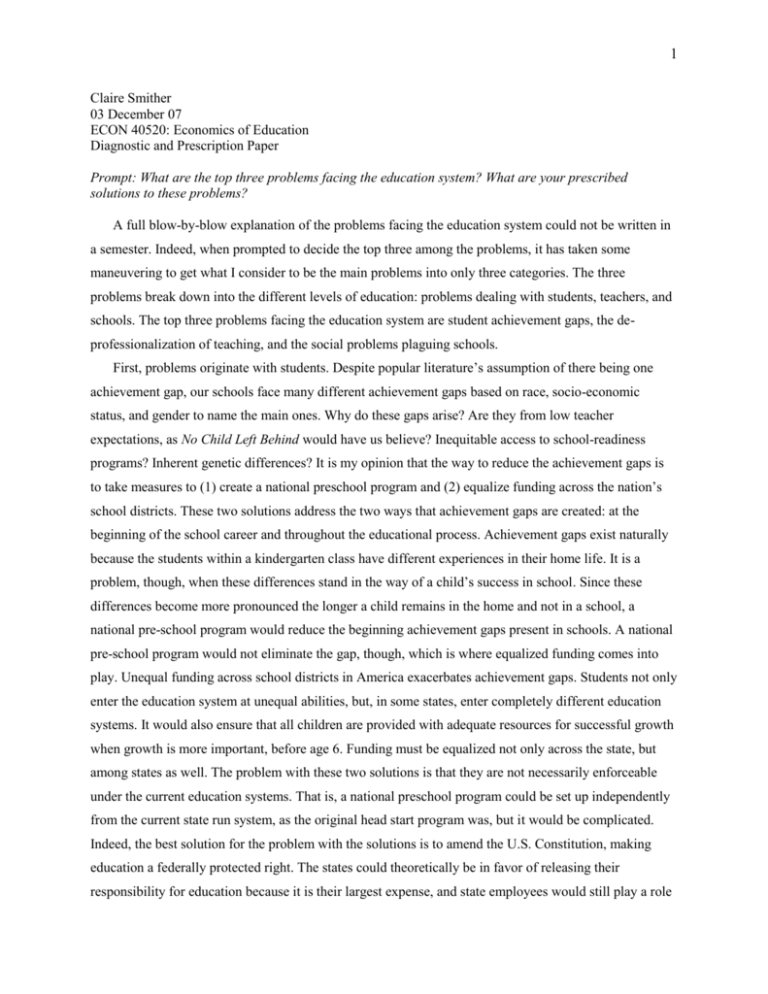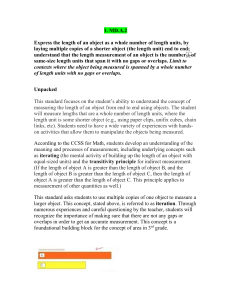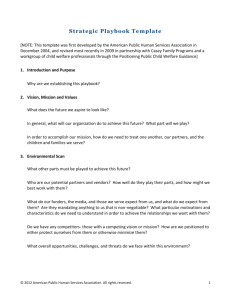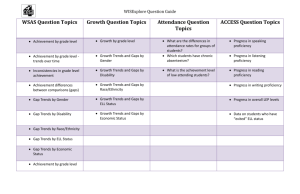Claire Smither
advertisement

1 Claire Smither 03 December 07 ECON 40520: Economics of Education Diagnostic and Prescription Paper Prompt: What are the top three problems facing the education system? What are your prescribed solutions to these problems? A full blow-by-blow explanation of the problems facing the education system could not be written in a semester. Indeed, when prompted to decide the top three among the problems, it has taken some maneuvering to get what I consider to be the main problems into only three categories. The three problems break down into the different levels of education: problems dealing with students, teachers, and schools. The top three problems facing the education system are student achievement gaps, the deprofessionalization of teaching, and the social problems plaguing schools. First, problems originate with students. Despite popular literature’s assumption of there being one achievement gap, our schools face many different achievement gaps based on race, socio-economic status, and gender to name the main ones. Why do these gaps arise? Are they from low teacher expectations, as No Child Left Behind would have us believe? Inequitable access to school-readiness programs? Inherent genetic differences? It is my opinion that the way to reduce the achievement gaps is to take measures to (1) create a national preschool program and (2) equalize funding across the nation’s school districts. These two solutions address the two ways that achievement gaps are created: at the beginning of the school career and throughout the educational process. Achievement gaps exist naturally because the students within a kindergarten class have different experiences in their home life. It is a problem, though, when these differences stand in the way of a child’s success in school. Since these differences become more pronounced the longer a child remains in the home and not in a school, a national pre-school program would reduce the beginning achievement gaps present in schools. A national pre-school program would not eliminate the gap, though, which is where equalized funding comes into play. Unequal funding across school districts in America exacerbates achievement gaps. Students not only enter the education system at unequal abilities, but, in some states, enter completely different education systems. It would also ensure that all children are provided with adequate resources for successful growth when growth is more important, before age 6. Funding must be equalized not only across the state, but among states as well. The problem with these two solutions is that they are not necessarily enforceable under the current education systems. That is, a national preschool program could be set up independently from the current state run system, as the original head start program was, but it would be complicated. Indeed, the best solution for the problem with the solutions is to amend the U.S. Constitution, making education a federally protected right. The states could theoretically be in favor of releasing their responsibility for education because it is their largest expense, and state employees would still play a role 2 in the federal system most likely. With an amendment to the Constitution, education could be a federally protected right to each citizen and funding would have to be equalized, just as each citizen is guaranteed equal protection under the law, each citizen is granted equal access to public resources. With these solutions, we could address the achievement gaps that plague our students. Second, at the next level in the educational hierarchy, teachers are undervalued, and stuck on a professional route that is continually de-professionalized. It has been the trend in this country to deprofessionalize teachers: standardized curriculum and pedagogy stand in the way of teachers being able to use their training in the classroom; bureaucratic procedures demand their time, decreasing time dedicated to planning and bonding with students. Teachers need more autonomy, perhaps in exchange for more training and higher pay. Teachers are professionals and should be treated and rewarded as such. To address this problem, the solution becomes more complicated. How can a society make a job more professional? Not only does the training need to increase so that teachers do become more professional, but the societal view of the job needs to reflect the increase in professionalism. My solution would be to start with the training. Make educational graduate programs necessary for hire and rigorous in nature. As the markets would dictate, creating more barriers to job entry will decrease the supply of teachers and (hopefully) increase the quality of teachers who finish their programs. With a decrease in supply and increase in quality, schools will be forced to pay more to their teachers (in market theory anyway). With more professional teachers, equalized funding, and a national pre-school program, we turn to the school level to address the last of the three main problems. Finally, schools are being held responsible for social problems without the resources to adequately address such problems. If there is anything that studying student mobility in South Bend has taught me, it’s that schools are being held responsible for social problems, over which they have no control; that is, schools and corporations do not have the resources to provide stability in students lives beyond the classroom, yet the schools are held responsible for standardized test scores with are primarily determined by the student’s home life. Until schools are provided with adequate resources (equalized and increased funding across the nation) it is unfair and unproductive to accuse them of failing to solve problems they are not working on. Education is an investment that should be viewed not on a year-by-year basis, but a long-run view; education works as a layering system, one bad year can be felt for many years afterwards. If schools are to be the great equalizing force in our society, then they need social services available at the school for families. What could be a more natural place to distribute aid than a school? Schools are idealized as a home-base for families to rely on for their children’s education, a community within the larger city community to grow together. More social services through the schools would also increase the incentives for strong, regular attendance and less mobility. A local principal said it best: ‘parents in poverty aren’t thinking about schools when they’re moving, they aren’t thinking about anything but the 3 next place for their family to stay. Making residential decisions based on schools is a luxury they don’t have.’ Because all parents cannot make active academic decisions for their children, schools need to provide social services to ensure that those parents who have basic priorities can be active as well. The three biggest problems facing our education system are the achievement gaps that plague our students, the de-professionalization of teaching, and the lack of social service aid available at schools. These are serious problems and they require serious solutions. Closing the achievement gap requires more than just mandating high expectations of all students; closing achievement gaps requires providing resources for schools and teachers to address the causes of the gaps. A national pre-school program would decrease the gaps before students enter traditional school. Equalized funding, through an amendment to the Constitution, would allow all students access to quality schools, much as the 14th Amendment granted equal access to public facilities African Americans and other minorities. Teachers are fundamental to the solution as well. Teachers are knowledgeable and dedicated workers; they are trained to do their job and should be rewarded as such. Increasing professionalism for teachers in their responsibilities, training, and pay would boost the profession and help students to learn. Finally, schools need resources to provide social services to their families. For many families, schools are on par with churches as far as accruing social capital; they are invested in their children’s education. For other families, food and shelter have to be considered before education can be addressed. There are going to be inherent differences in student achievement if basic necessities aren’t met. Since schools are held responsible for student’s achievement, they should also be given the resources to address the whole students’ needs: physical, social, psychological, and academic. With these problems addressed and these solutions implemented, our system would be on track to great improvements in providing an equitable, excellent education to all the nation’s students.





